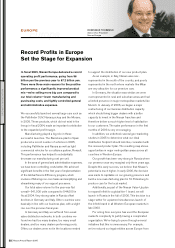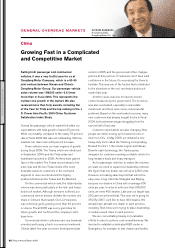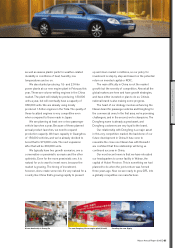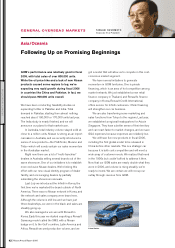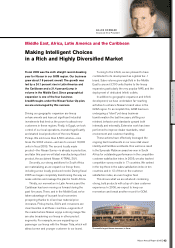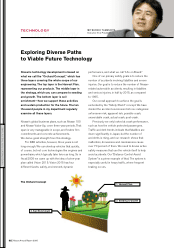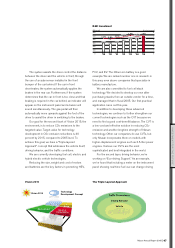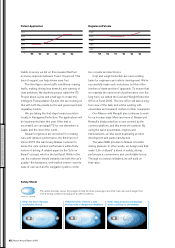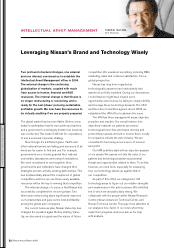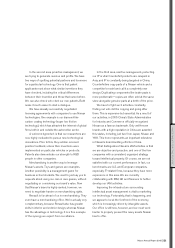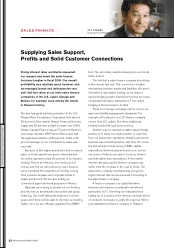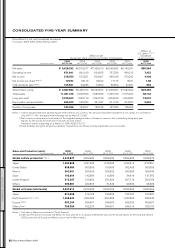Nissan 2006 Annual Report Download - page 48
Download and view the complete annual report
Please find page 48 of the 2006 Nissan annual report below. You can navigate through the pages in the report by either clicking on the pages listed below, or by using the keyword search tool below to find specific information within the annual report.
Nissan Annual Report 2005
46
Exploring Diverse Paths
to Viable Future Technology
TTeecchhnnoollooggyy
1. Harvest Plan
2. Seeding & Growth
3. Soil Enrichment
Nissan’s technology development is based on
what we call the “Orchard Concept,” which has
three layers covering the whole scope of our
engineering. The top layer is the Harvest Plan,
representing our products. The middle layer is
the strategy, which you can compare to seeding
and growth. The bottom layer is soil
enrichment—how we support these activities
and sustain production for the future. The ten
thousand people in my department regularly
examine all these layers.
Nissan’s global business plans, such as Nissan 180
and Nissan Value-Up, cover three-year periods. That
span is very manageable in scope, and fosters firm
commitments and concrete achievements.
We derive great strength from this strategy.
For R&D activities, however, three years is not
long enough. We can develop vehicles that quickly,
of course, but not core technologies like engines and
powertrains, which typically take twice as long. So in
fiscal 2005 we came up with the idea of a ten-year
plan called Vision 2015. Vision 2015 has four
different facets: safety, environment, dynamic
performance, and what we call “Life on Board.”
One of our primary safety goals is to reduce the
number of accidents involving fatalities and severe
injuries. Our goal is to reduce the number of Nissan-
related automobile accidents, resulting in fatalities
and serious injuries, in half by 2015, as compared
to 1995.
Our overall approach to achieve the goal is
embodied by the “Safety Shield” concept. We have
divided the accident environment into six categories:
unforeseen risk, apparent risk, possible crash,
unavoidable crash, actual crash, post-crash.
Previously we only looked at crash performance,
such as how the vehicle protected passengers.
Traffic accident trends indicate that fatalities are
down significantly in Japan, but the number of
accidents is rising, and our research shows that
inattention, drowsiness and carelessness cause
over 70 percent of them. We need to devise active
safety measures that use the vehicle itself to help
avoid accidents. Our “Distance Control Assist
System” is a prime example of that. The system is
especially useful in heavy traffic, where frequent
braking occurs.
INVESTMENT FOR THE FUTURE
MITSUHIKO YAMASHITA
Executive Vice President
TECHNOLOGY
The Orchard Concept




